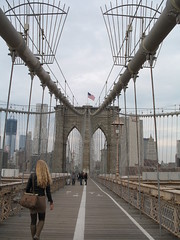Since someone asked how I created my awesome magnetic whiteboard, here is how to make your own. (Step 7 is the key step.)
1. Read a blog post about how someone else uses their giant whiteboard to plot novels with big swoopy arrows or for some other cool purpose. Wish you weren’t a grad student and could afford one/had a wall to put it on. Repeat at least annually for several years.
2. Get frustrated with plotting and structuring novels on paper or a small computer screen.
3. Decide that since you own a house and have a job, you can get a whiteboard.
4. Be shocked by the cost of 5×3 or bigger magnetic whiteboards. Read reviews on Amazon, which reveal shipping problems like bent corners. Decide not to risk it.
5. Notice that there exist things called magnetic paint (it isn’t magnetic, it has metal in it) and whiteboard paint. Read reviews. Get very excited.
6. Dither over dry erase vs chalkboard. Magnetic paint is dark, so would be easier to cover with the also-dark blackboard paint, and the paint manufacturer (Rustoleum) talks about making magnetic blackboards, not whiteboards. Whiteboard paint might take several layers, each of which makes it less likely to attract magnets. The whiteboard paint has much poorer reviews than the blackboard paint. But dry erase is much nicer than chalk.
7. Go to Home Depot and spend ~$50 on one can of Rustoleum magnetic paint and whiteboard paint and assorted rollers and paint trays.
8. Tape off a randomly sized section of wall (a bit bigger than 3×5) based on where the windows are. Forget that the rollers won’t be able to go right up to the edge of the windowsill because they’re cylindrical. Find a drop cloth that might have been a rug pad in a previous life.
9. Sand the wall. A lot. But not enough.
10. Stir the magnetic paint FOREVER, or for the 10 minutes the directions call for, whichever comes first, and then paint the wall. Add a coat every half hour until the entire can has been used. Lose count of coats after 4 or 5. Scrub arms with a pumice stone to get the drops off.
11. Experiment to find out that a magnet will hold 4 sheets of paper and one index card to the wall. Theorize that one layer of whiteboard paint = one sheet of paper as far as the magnet is concerned, so this is ok.
12. Wait a day, then tackle the whiteboard part of the plan. Whiteboard paint has to be used within two hours of being mixed, which means you can do 4 or 5 coats. Four sounds safe.
13. Paint. Discover that the reviews weren’t kidding, the whiteboard paint is very thin and runny, and your wall, which wasn’t flat to begin with, now has rivulets of paint running down it. More thin coats would be better than thick coats, but that’s not possible with the two-hour time limit. Wish that it came in smaller cans. Also discover that four coats isn’t quite enough to hide the magnetic paint.
14. Refuse to fret about the bumps and not-completely-white spots until the two-day wait for the paint to cure has passed.
15. Write. Erase. Stick papers up with magnets. Rejoice.



